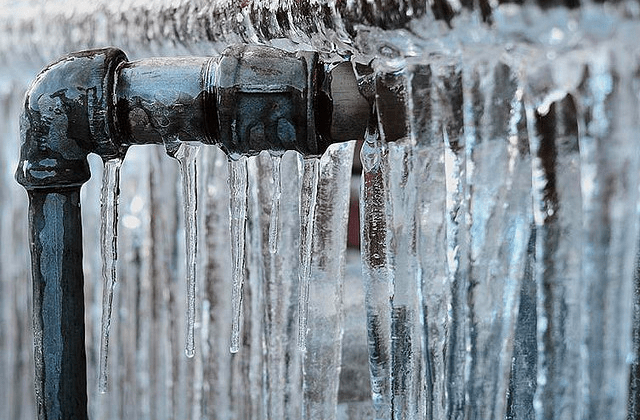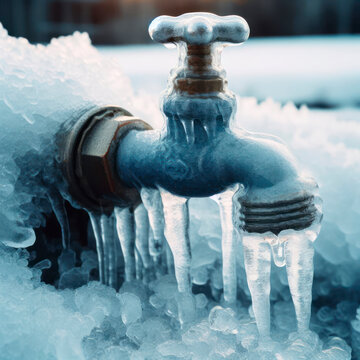Tips to Prevent Frozen Pipes in Cold Weather: Professional Guidance
Tips to Prevent Frozen Pipes in Cold Weather: Professional Guidance
Blog Article
What are your opinions concerning Winter Plumbing Precautions: Preventing Frozen Pipes?

Cold weather can ruin your pipes, specifically by freezing pipelines. Right here's exactly how to avoid it from occurring and what to do if it does.
Intro
As temperatures decrease, the risk of icy pipes boosts, potentially causing costly repair work and water damage. Comprehending exactly how to avoid frozen pipes is critical for homeowners in chilly climates.
Comprehending Frozen Pipes
What creates pipelines to ice up?
Pipelines freeze when subjected to temperature levels listed below 32 ° F (0 ° C) for extended periods. As water inside the pipes ices up, it broadens, putting pressure on the pipe wall surfaces and potentially causing them to break.
Dangers and damages
Icy pipes can result in supply of water disruptions, property damages, and expensive fixings. Burst pipes can flood homes and trigger comprehensive architectural damage.
Indicators of Frozen Water Lines
Determining frozen pipes early can prevent them from rupturing.
Just how to recognize icy pipelines
Look for decreased water flow from faucets, unusual odors or noises from pipes, and visible frost on exposed pipes.
Avoidance Tips
Insulating prone pipes
Wrap pipes in insulation sleeves or use heat tape to protect them from freezing temperature levels. Concentrate on pipelines in unheated or outside areas of the home.
Heating techniques
Maintain indoor spaces effectively heated up, particularly areas with pipes. Open cabinet doors to enable warm air to circulate around pipelines under sinks.
Safeguarding Outdoor Plumbing
Yard hoses and exterior faucets
Separate and drain yard hose pipes prior to wintertime. Mount frost-proof faucets or cover outside taps with protected caps.
What to Do If Your Pipelines Freeze
Immediate actions to take
If you presume icy pipes, maintain faucets available to soothe pressure as the ice thaws. Utilize a hairdryer or towels taken in warm water to thaw pipes slowly.
Long-Term Solutions
Architectural adjustments
Think about rerouting pipes far from outside wall surfaces or unheated areas. Add additional insulation to attic rooms, cellars, and crawl spaces.
Updating insulation
Buy top quality insulation for pipes, attics, and wall surfaces. Correct insulation aids keep regular temperature levels and minimizes the danger of frozen pipes.
Verdict
Preventing icy pipelines requires proactive actions and fast feedbacks. By recognizing the causes, indicators, and preventive measures, home owners can protect their plumbing during winter.
5 Ways to Prevent Frozen Pipes
Drain Outdoor Faucets and Disconnect Hoses
First, close the shut-off valve that controls the flow of water in the pipe to your outdoor faucet. Then, head outside to disconnect and drain your hose and open the outdoor faucet to allow the water to completely drain out of the line. Turn off the faucet when done. Finally, head back to the shut-off valve and drain the remaining water inside the pipe into a bucket or container. Additionally, if you have a home irrigation system, you should consider hiring an expert to clear the system of water each year.
Insulate Pipes
One of the best and most cost-effective methods for preventing frozen water pipes is to wrap your pipes with insulation. This is especially important for areas in your home that aren’t exposed to heat, such as an attic. We suggest using foam sleeves, which can typically be found at your local hardware store.
Keep Heat Running at 65
Your pipes are located inside your walls, and the temperature there is much colder than the rest of the house. To prevent your pipes from freezing, The Insurance Information Institute suggests that you keep your home heated to at least 65 degrees, even when traveling. You may want to invest in smart devices that can keep an eye on the temperature in your home while you’re away.
Leave Water Dripping
Moving water — even a small trickle — can prevent ice from forming inside your pipes. When freezing temps are imminent, start a drip of water from all faucets that serve exposed pipes. Leaving a few faucets running will also help relieve pressure inside the pipes and help prevent a rupture if the water inside freezes.
Open Cupboard Doors
Warm your kitchen and bathroom pipes by opening cupboards and vanities. You should also leave your interior doors ajar to help warm air circulate evenly throughout your home.

Do you like more info about How To Avoid Freezing Pipes? Create feedback down the page. We will be glad to listen to your views about this blog. In hopes to see you back again before long. Liked our review? Please share it. Help another person locate it. Kudos for being here. Kindly stop by our website back soon.
Call Today Report this page